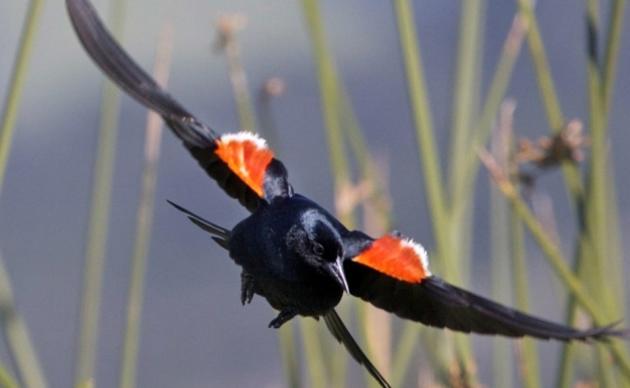The Tricolored Blackbird, once one of the most numerous birds in California, is now a species that most Californians will never see; however, committed conservationists like Dan Airola are working to change that. For three years, Airola has been tirelessly pursuing the Tricolored Blackbird. His passion for the conservation and study of this species has led to thousands of miles on his car, but also important data that is helping the conservation community better understand Tricolored Blackbirds. His research has shed light on how the birds are using rangelands and on why smaller colonies can contribute an important role saving the species.
While a high proportion of Tricolored Blackbirds nest in massive colonies on San Joaquin Valley farms, there are also smaller colonies using California’s foothills to nest, forage, and raise young. These foothill colonies are less studied, frequently harder to find, and as we are learning from Dan - facing their own threats and challenges.
Losing Ground
Dan has been leading an effort to monitor the threat that suburban and urban growth poses to Tricolored Blackbird colonies in the lower foothills of the Sierra Nevada. The recent economic recovery has increased the pace of expansion of cities and neighborhoods into critical Tricolored Blackbird nesting and foraging habitat in the foothills. Unfortunately, many of these development projects were approved prior to the recent listing of the species as a candidate under the state Endangered Species Act, meaning that the approving cities, counties, and the project developers have not addressed the impact their projects have on Tricolored Blackbirds. Dan’s studies show that nearly half of the 2014 foothill nesting population are in areas slated for development. His work also shows that many foothill colonies consistently produce young.
While residential and commercial development threatens a number of Tricolored Blackbird colonies in the Sierra Nevada Foothill region, another less visible threat is also present. Dan's studies have shown the importance of grassland and pasture habitats in the Sierra region to Tricolored Blackbirds, which rely on these areas to forage and feed their young. These lands also form the backbone of the livestock industry in the region. Responsible grazing, pasture irrigation, and creation of stock ponds, is largely responsible for the healthy Tricolored Blackbird population in the foothills. This fortuitous confluence of economic activity and conservation, however, is threatened by widespread conversion of rangelands to orchards and vineyards in the region. This past month, during surveys in San Joaquin and Calaveras counties, Dan documented thousands of acres of Tricolored Blackbird habitat that was lost by planting of orchard trees and vines.
By understanding where and how Tricolored Blackbirds are using the foothills, conservationists can better target land protection and conservation to benefit the species.

Drought
In the southern Sierra foothills Tricolored Blackbird nesting virtually disappeared during recent drought years, due to lack of nesting habitat. Dan is now evaluating whether the birds will nest in the southern Sierra Foothills as normal rainfall conditions replenish the ponds, drainages, and canals that produce the wetland vegetation used by Tricolored Blackbirds. Surveys show that a number of Tricolored Blackbird colonies are returning to the southern Sierra foothills. This initial encouraging result validates the ongoing planning efforts to create high quality, stable nesting habitat in the Southern Sierra Region. Dan’s studies show that if we build this habitat, we can increase foothill Tricolored Blackbird populations.
By Meghan Hertel
$5 Saves 5 Birds
We’ve done the math -- guaranteeing that a Tricolored Blackbird can fully fledge works out to about $1/bird. It’s a small price to pay to protect this beautiful species.




